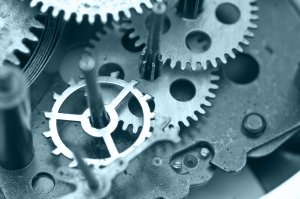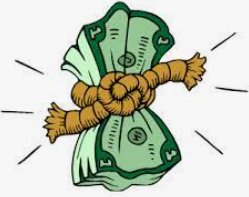Since the financial crisis in 2008, the Federal Reserve has gone through a process of cutting interest rates – raising interest rates – cutting interest rates – raising interest rates. After the subprime mortgage crisis, especially the international financial crisis, the Federal Reserve began a rapid process of cutting interest rates. In December 2008, the federal funds rate was reduced to an ultra-low level of zero to 0.25%, officially entering the era of zero interest rates.

QE – Introduction of new money into the money supply by a central bank
At the same time, the Fed started a round of quantitative easing (QE), printing dollars, buying U.S. bonds, and releasing water significantly. The Fed’s total assets rose from about $900 billion at the beginning of 2008 to about $4.5 trillion at the end of 2014.
At the end of 2014, the Federal Reserve announced the termination of QE. In 2015, the Federal Reserve raised interest rates for the first time after the financial crisis. Since then, the interest rate has been raised continuously until 2018. The benchmark interest rate has risen from 0-0.25% to 2.25%-2.5%.
In August 2019, the first interest rate cut in 10 years began, especially during the new crown epidemic in 2020, two large-scale interest rate cuts directly lowered the benchmark interest rate to 0 to 0.25%, starting the era of zero interest rates.
At the same time, the second round of quantitative easing (QE) was launched, and the Fed’s total assets expanded significantly from about $4.2 trillion at the beginning of 2020 to the current $8.9 trillion.
7 things about Fed rate hike
1. How did the Fed raise interest rates?
The benchmark interest rate in the United States is the federal funds rate, which is the rate at which commercial banks-commercial banks-non-bank financial institutions borrowing money. When Fed raises interest rates, it simply wants to bring up federal funds rate.

There are two main ways. One is to increase the lending rate between the Federal Reserve and commercial banks. This is because the ultimate source of base money for commercial banks is the Federal Reserve. After the lending rate between the Federal Reserve and commercial banks increases, the federal funds rate will passively increase.
The second is to reduce the amount of dollars flowing between financial institutions. As there is less money, the dollar becomes more expensive, and ultimately interest rate rises.
2. Why is the Fed adjusting interest rates?
The main reason is the need to return to normalization of monetary policy.
The Fed has twice cut its benchmark interest rate to near zero while conducting massive quantitative easing. One was after the 2008 international financial crisis, and the other was after the COVID-19 pandemic. But this is an unconventional monetary policy. On the one hand, the large-scale release of water has led to severe flooding (inflation). On the other hand, after all the bullets in the monetary toolbox are exhausted, it will be difficult to fight back if the next financial crisis occurs.

Signs of inflation
A) Production begins to fall,
B) Interest rates increases, and
C) Purchasing power falls
Currently, there are three conditions for the Fed to raise interest rates:
(i) Inflation rate
The U.S. CPI in February rose 7.9% year-on-year, hitting a 40-year high and energy prices soared amid the Russia-Ukraine conflict.
Federal Reserve Chairman Jerome Powell also said in a press conference after raising interest rates that inflation remains well above the long-term target of 2%, with the conflict between Russia and Ukraine and soaring energy prices putting more upward pressure on inflation. Supply disruptions were wider and longer-lasting than previously expected.
(ii) Unemployment
In February 2022, the unemployment rate in the United States was 3.8%, which is a good level if it is lower than 5%. It also meets the conditions for raising interest rates.
(iii) Debt ratio
Debt ratio is also known as leverage ratio. The macro leverage ratio of the United States at the end of the third quarter of 2021 was 281.1%, which was 26.0 percentage points higher than that at the end of 2019. This is equivalent to the debt owed by the United States that will take 2.8 years to pay off.
The U.S. debt ratio has increased rapidly in the past two years, mainly because of quantitative easing. Since February 2020, the growth rate of *M2 money supply has reached 41.2%, which is equivalent to an increase of 41.2% in the amount of money printing, exceeded 300%.
*M2 is a measure of the money supply that includes cash, checking deposits, and easily-convertible near money
– To buy cryptocurrency, first you need to pick a broker or a crypto exchange –
3. How Russia-Ukraine conflict affect the Fed’s rate hike?
The direct impact of the Russia-Ukraine conflict is to accelerate global inflation. It was originally expected that U.S. inflation may peak in March, but it now appears that inflation will be much delayed.

Russia’s oil, natural gas, and coal exports accounted for 11.4%, 8.3%, and 17.8% of the world’s exports, respectively. The combined barley production and export volume of Russia and Ukraine account for about 19% and 30% of the world, respectively.
On the one hand, the conflict has led to blocked transportation lines and poor logistics around the world. On the other hand, sanctions and counter-sanctions have led to restrictions on global trade and a drop in supply. Originally, due to the new crown epidemic, the global supply chain has not fully recovered and now it is becoming worse.
4. Will the U.S. raise interest rates again?
The United States has entered an interest rate hike cycle, and this rate hike is just the beginning, and it will definitely continue to raise interest rates this year. At the beginning of this year, Federal Reserve Chairman Powell said that there is a lot of room for interest rate hikes, and it is not ruled out that (2022) will raise interest rates at every interest rate meeting.
5. What is the strategy for the Fed to tighten monetary policy?
The strategy of the Fed to tighten monetary policy is: *Taper – raising interest rates – shrinking the balance sheet.

Tightening policy occurs when central banks raise the federal funds rate, and easing occurs when central banks lower the federal funds rate
*Taper means tapering off bond purchases (print dollars, buy bonds). Essentially reducing the amount of money printed.
6. Why does the U.S. interest rate hike cause the world to fluctuate?
U.S. interest rate hikes will give the U.S. an interest rate differential advantage if other countries do not follow suit. For example, the Fed raises interest rates by 50 basis points, which means that the US dollar interest rate has increased by 50 basis points, and the interest rates of other countries have not changed. Funds need to enter the United States from their own countries for profit-seeking, resulting in the outflow of domestic funds and the depreciation of the currency.
Historically, each cycle of U.S. interest rate hikes has depreciated other currencies. For example, in the last round of interest rate hike cycle, the currencies of Turkey and Argentina collapsed.
U.S. interest rate hikes will lead to a global wave of interest rate hikes, increasing interest on foreign debts of various countries, and due to the value of local currencies, the pressure to repay debts is huge, which is bad news for countries with an excessively large proportion of foreign debts.
The U.S. dollar is the world currency. The U.S. dollar accounts for nearly 60% of global foreign exchange reserves and more than 80% of international settlements. The U.S. dollar will appreciate due to the interest rate hike by the Federal Reserve. The appreciation of the U.S. dollar will lead to the price of gold, oil, natural gas, and grain to be compressed.
7. The US raises interest rates, will China follow?
Not only is it impossible for China to follow the U.S. in raising interest rates this year, it may cut interest rates instead.
At present, China has problems such as an overcooled property market, falling investment, and low consumption, which have been reflected in the economy, and the downward pressure on the domestic economy has further increased. This time requires the support of monetary policies such as RRR cuts and interest rate cuts.





[…] Read blog: What does a Fed rate hike mean? […]
[…] Read blog: What does a Fed rate hike mean? […]